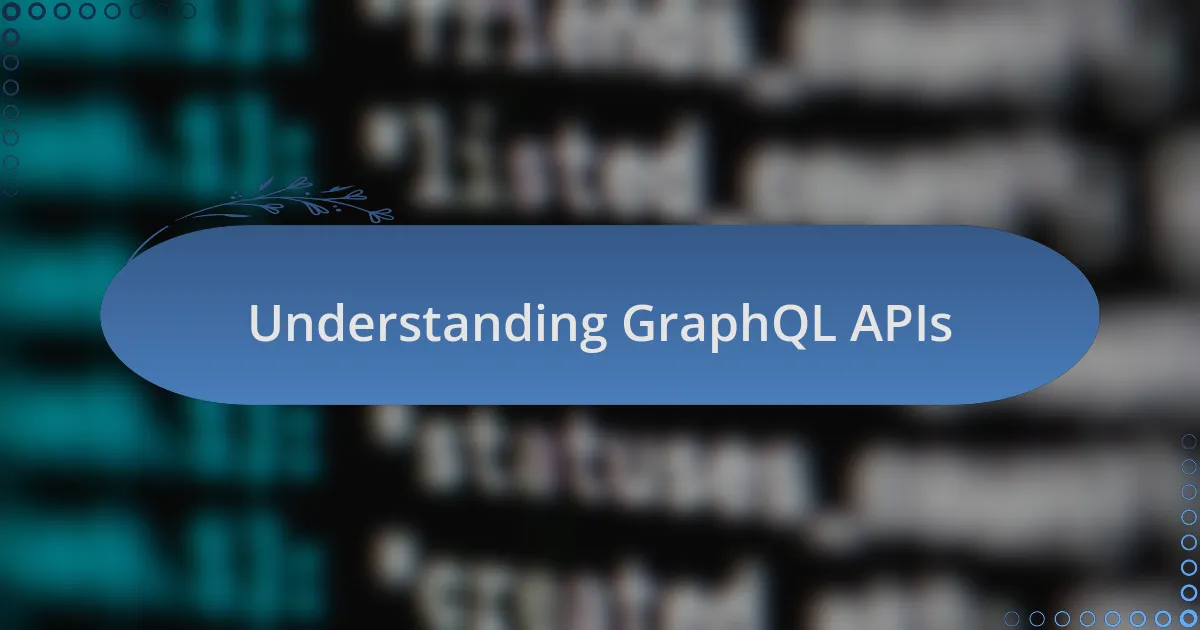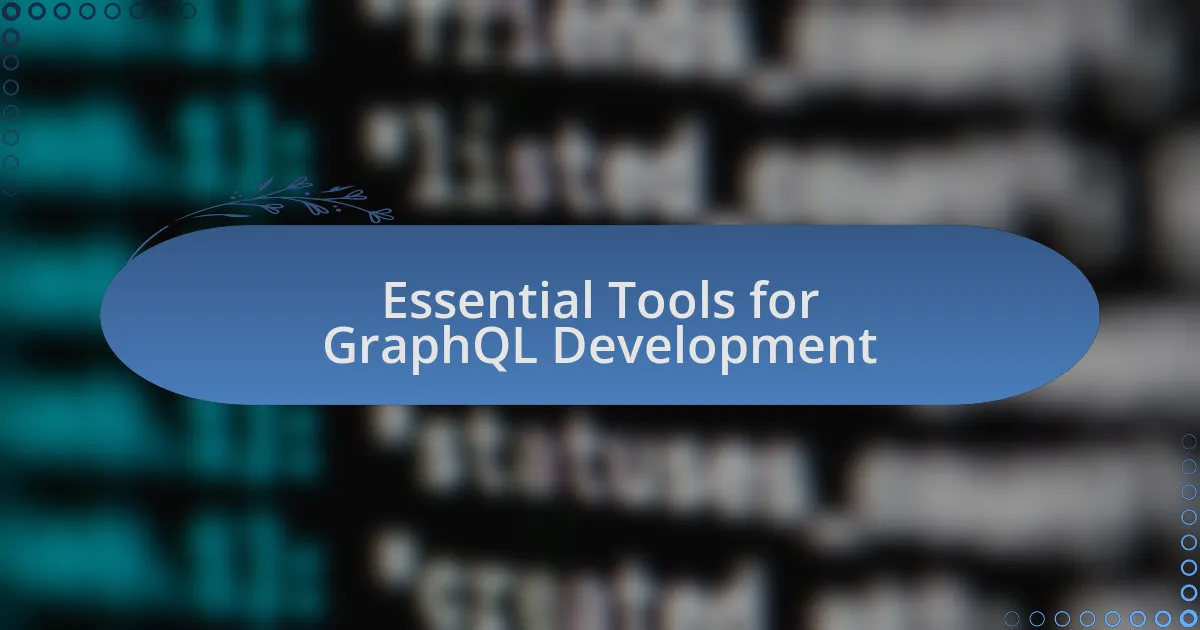Key takeaways:
- GraphQL offers more flexibility and efficiency in data retrieval compared to REST, allowing multiple data requests to be combined into a single query.
- Defining a clear schema is essential for successful development, aiding in understanding data structure and improving team collaboration.
- Tools like Apollo Client, GraphiQL, and Postman enhance GraphQL development by simplifying data management, real-time query testing, and clear documentation.
- Embracing the GraphQL community provides valuable support and shared knowledge, making development challenges easier to navigate.

Understanding GraphQL APIs
When I first dove into building a GraphQL API, I was immediately struck by its flexibility. Unlike REST, where I often felt constrained by predefined endpoints, GraphQL empowers the client to specify exactly what data it needs. Isn’t it refreshing to think about how much more control we have over our data requests?
One of my “aha” moments came when I realized how GraphQL handles complex queries. Instead of fumbling with multiple API calls to gather connected data, I could pull everything in a single request. It felt almost like magic, transforming a cumbersome process into something elegant and efficient. Have you ever faced the frustration of managing too many requests? GraphQL offers a streamlined alternative that can truly simplify the development experience.
As I expanded my GraphQL knowledge, I discovered the importance of defining your schema. Crafting a clear schema not only helps in understanding the data structure but also lays a solid foundation for the functionality of the API. I remember feeling a mix of excitement and anxiety while designing it—what if I got it wrong? But with practice, I learned that a well-thought-out schema can guide development and improve collaboration across teams, making everyone’s life a little easier.

Key Benefits of Using GraphQL
One of the standout benefits I’ve experienced with GraphQL is its efficiency in data retrieval. I remember a project where data was scattered across multiple services, leading to long loading times. With GraphQL, I could fetch all the necessary data in one go, turning what used to be a frustrating waiting game into a lightning-fast experience. Isn’t it amazing how optimizing data fetching can enhance user satisfaction?
Another key advantage I’ve noticed is how easily GraphQL adapts to changes. I can recall working on a feature that required additional fields for a database, which would have been a headache with REST APIs. Instead, I simply updated the GraphQL schema, and that was it—no need for extensive refactoring. It’s like having a system that grows and evolves alongside your project. How often do we wish for that kind of flexibility in development?
Lastly, the strong type system of GraphQL has significantly improved my development workflow. Initially, I was skeptical about the time investment in defining types. However, I quickly realized that clear types help catch errors early, saving countless hours down the road. It’s striking how enhanced predictability can lead to a more robust API. Have you ever felt the relief of knowing that the structure you’ve defined keeps you on the right track?

Essential Tools for GraphQL Development
When diving into GraphQL development, having the right tools can make all the difference. For starters, I highly recommend using Apollo Client. I remember when I first integrated it into my project; it just simplified data management. The built-in caching mechanism not only improved performance but also reduced my API calls significantly. Isn’t it fascinating how a single tool can streamline your workflow?
Another tool that has become indispensable for me is GraphiQL, the interactive in-browser IDE for exploring GraphQL. Once I started using it, I found it incredibly helpful for testing queries in real-time. The instant feedback allowed me to troubleshoot issues on the fly, which is priceless when you’re on a tight deadline. Have you ever felt that rush when you finally debug a tricky query?
Lastly, I can’t emphasize enough the value of using a tool like Postman for testing and documenting your GraphQL APIs. Initially, I thought of it as just another tool in my kit, but I soon realized its power in building a clear understanding of how my API endpoints worked. Keeping everything documented helped foster better communication with my team, and I found that clarity breeds efficiency. Isn’t it rewarding when your team is on the same page?

Personal Insights from My Experience
Reflecting on my journey with GraphQL, one of the biggest insights I’ve gained is the importance of structuring my schema thoughtfully from the start. I distinctly recall a project where I rushed through this phase. The rework that followed was a valuable lesson in how proper planning can save you hours—if not days—of headaches later on. It makes me wonder: how much smoother would projects run if everyone prioritized schema design?
There was also a moment when I misunderstood the significance of error handling in GraphQL. In an early project, I overlooked the custom error messages. As a result, my team struggled to identify issues promptly. This experience opened my eyes to how vital clear communication is, not just within our code but also through the information we provide back to our clients. Have you ever been stuck chasing down a problem that could have been easily avoided?
Finally, I’ve realized that embracing the community around GraphQL can be a game changer. Joining forums and participating in discussions made me feel less isolated during challenging phases of development. The shared tips and advice offered by others who faced similar hurdles were enlightening. It made me appreciate how collective knowledge can elevate individual projects. It begs the question: why tackle complex challenges alone when there’s a whole community ready to support you?